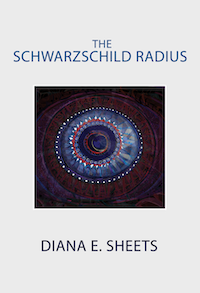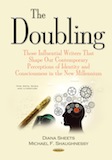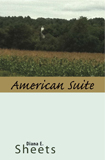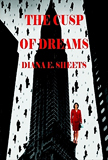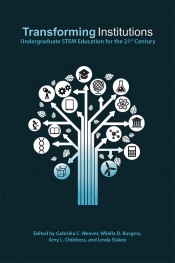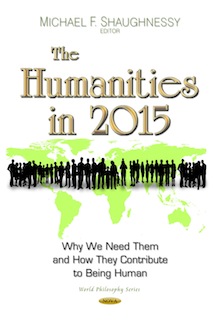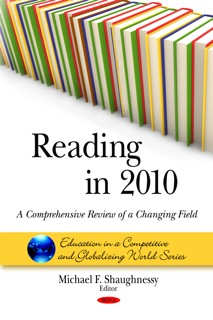Reading and Thinking Critically in the Age of Disputation, Part II
Part II of “Reading and Thinking Critically in the Age of Disputation”. This essay on critical thinking will be serialized in three parts. It is available in an edited collection Critical Thinking and Higher Order Thinking: A Current Perspective edited by Michael F. Shaughnessy and published in 2012 by Nova Science Publishers. A “read only” version of this essay, provided it is intended for noncommercial purposes, may be accessed from my Literary Gulag website, http://www.literarygulag.com/Critical-Thinking.pdf. All copyright permissions must be obtained from the publisher.
Diana Sheets
English and History Departments,
University of Illinois
Dedicated to Max Weismann, Chairman of the Great Books Academy and Will Fitzhugh, Editor and Publisher of The Concord Review.
Decline of Critical Thinking and “Readerly” Excellence
In order to assess the impact of the Internet on reading practices today, we must analyze this technological shift within the context of our recent cultural and political history. Until the “Culture Wars” (1960s-1990s) succeeded in felling the Western Canon, America was a society motivated to understand its cultural heritage, and for much of the 20th century this meant reading the “Great Books”. (Diana E. Sheets, “The Great Books and Cultural Identity: The Rise and Fall of Western Memory and Its Implications for our Time”, Reading in 2010, Editor Michael F. Shaughnessy, Nova Science Publishers, Inc., 2010. A “read only” version of this essay may be accessed from Literary Gulag provided it is for noncommercial purposes, http://www.literarygulag.com/Reading-in-2010.pdf.) But an appreciation of the Canon requires several unspoken assumptions that today are only affirmed by cultural conservatives. These include the following. There are national cultural values to which all Americans should subscribe and these are defined by American Exceptionalism. Our culture is hierarchical, which suggests that some books, music, art, and dance are judged better than others and, therefore, more worthy of our appreciation. Our leaders—academics, critics, and public intellectuals—must shape the standards and values that inform our appreciation of culture. These standards and values are determined by excellence rather than identity politics. Finally, as Americans we are aspirational, desiring to understand the greatest cultural endeavors of Western Civilization upon which we base our cultural heritage. These assumptions guided America’s cultural practices and, to a large degree, determined one’s social status through the late 1960s. An individual might not have gone to Harvard University or Columbia University or The University of Chicago, but having read the Great Books of the Western World meant that he or she could hold his or her own in any conversation with intellectuals, political leaders, and captains of industry. But this achievement was predicated on becoming critical thinkers as Mortimer J. Adler understood when he first published How to Read a Book in 1940.
At the heart of this aspirational society was the “middlebrow” reader whose ideas, tastes, and values were inculcated by a middlebrow culture influenced by individuals who were regarded as America’s cultural leaders (Joan Shelley Rubin, The Making of Middlebrow Culture, The University of North Carolina Press, 1992). The middlebrow reader was charged with a “manly” quest of self improvement, the culmination of which was a mastery of the Western Canon. The middlebrow reader’s purpose was driven by the two operative assumptions. “By reading and understanding the Great Books one obtains a better understanding of some of the greatest contributions to Western Civilization, thereby acquiring the analytic and competitive skills for communicating and interacting successfully in society and the workplace”. Contrast that perspective with today’s feminized groupthink fueled by narcissism and a need for social validation that is motivated by political correctness: “If I celebrate ‘me’ and advocate social justice, my family and friends will acknowledge I am a good person”. (To understand our transformation from a manly aspirational culture to a feminized society dedicated to the pursuit of social justice at the expense of truth and excellence, consult my essays archived on my website, Literary Gulag, particularly “The ‘Pink and White Tyranny’ and Its Toll on Fiction”, http://www.literarygulag.com/blog/show/5 and “Literary Fiction and ‘Adam’s Curse’”, http://www.literarygulag.com/blog/show/6.)
Today even the term middlebrow sends shudders down our spines. Who, indeed, wants or aspires to middle anything? The Baby-Boom Generation felt that rules did not apply to them, that they were special, that the Darwinian struggle of “Who is the Fittest?” need not apply. In the aftermath of the Culture Wars that climaxed in the late 1980s and early 1990s, the notion of a hierarchical society dictated by excellence dissolved. Instead of a nation of middlebrow strivers struggling to master the Great Books, there followed successive generations of Americans celebrating a culture predicated on “me” (Sheets, “The Great Books and Cultural Identity”).
Our changing social mores were exemplified by the responses to Robert Pinsky’s “Favorite Poem Project” initiated in 1997. Readers were asked by Pinsky, then the United States Poet Laureate, to supply the title of their favorite poem along with a brief assessment of its “personal meaning”. Over 17,000 replies were received. What the database reveals is that the respondents felt no compunction to refer to the canonical heritage of great poetry. Their selections were overwhelmingly dictated by subjective, personal experience. By way of example, twenty-five people choose “Little Boy Blue”. Of these, seven replied that they were moved by the poem because of the sentiment expressed by the poet Eugene Field, who wrote the poem after his son’s death. All seven individuals mentioned their experience in nursing a very sick child or having lost one (Joan Shelley Rubin, “The Enduring Reader” in The Enduring Book Print Culture in Postwar America, Vol. 5 of the series A History of the Book in America. Eds.: David Paul Nord, Joan Shelley Rubin, Michael Schudson, & David D. Hall, The University of North Carolina Press, 2009).
Of those who participated in the “Favorite Poem Project”, overwhelmingly their responses were dictated by emotional feeling rather than analytic complexity. Thus, one writer commented on the religious spirituality of Whitman while another emphasized the healing powers associated with “self care and self love”. All told, Rubin concluded, “the responses to Pinsky’s query compellingly reveal people remaking texts in light of both their inner emotions and the social relationships and cultural values that have shaped their reading experiences” (Rubin, 2009, p. 426). But over and above the “Favorite Poem Project” was the cultural validation of the subjectivity of the self-anointed critic. When Jeff Bezos introduced the online bookstore Amazon.com in 1994, it was the customer reviews and in-house reviews that drove buyer selection, rather than newspaper, magazine, and journal reviews. One reader suggested, “It was breaking rules. It was about going against the grain. It really wasn’t about selling. Amazon really catered to that by letting people put up reviews of books” (Rubin, 2009, p. 427).
An even more dramatic illustration of the elevation of personal opinion at the expense of “elite” critical assessment was demonstrated with the phenomenal success of “Oprah’s Book Club” on the syndicated television program “The Oprah Winfrey Show”. The book club was introduced in September of 1996 and may conclude when Oprah’s program ends in 2011 after completing its 25th season. But by any measure thus far, it would appear that the monthly book selections were most influential between 1996 and 2002 (Sarah Weinman, “Will Oprah’s Long Goodbye Doom Her Career as Literary Tastemaker?” DailyFinance, November 24, 2009, http://www.dailyfinance.com/2009/11/24/will-oprahs-long-goodbye-doom-her-career-as-literary-tastemaker/). Using 1999 as a point of reference, “Oprah’s Book Club” attracted 13 million monthly viewers, almost all of whom were women. In the weeks preceding or following “Oprah’s Book Club”, it is estimated that nearly one million readers or buyers read or bought the books discussed on her program (Rubin, 2009). Oprah’s “pitch” was designed to elicit the emotional engagement of viewers through the introduction of biographical information about the author appearing on the program or social details about the story. But the motivations influencing sales were fueled by celebrity, virtue politics, and groupthink: “Oprah liked the book; I will too, after all, it’s about personal redemption”; “Oprah Winfrey is black; she’s a good woman; I am a good woman if I read this book”; and “Oprah and so many other women in her audience loved this book, and so will I”.
Politics, Worldview, and the Decline of Critical Thinking
At the heart of all “active” or “strong reading” lies critical thinking, the ability to assess dispassionately the strengths or weakness of any book, concept, and idea. But what happens when the worldview shifts such that all authority or authoritative scholarship, formerly known as excellence, is dismissed in favor of championing the underdog, the victimized, the disenfranchised—or those who are perceived as disenfranchised, although they may occupy the seat of power or be celebrated and advanced by those in power—not on the basis of excellence but because we perceive that they have suffered some form of injustice.
Since the late 1980s academe has turned its back on excellence. Scholars, some deceased, others aged, and the rest marginalized have voiced their complaints including Allan Bloom, The Closing of the American Mind: How Higher Education Has Failed Democracy and Impoverished the Souls of Today’s Students (1987); Robert Alter, The Pleasures of Reading in an Ideological Age (1989/1996); Roger Kimball, Tenured Radicals: How Politics Has Corrupted Our Higher Education (1990/2008); Alvin Kernan, The Death of Literature (1990); Harold Bloom, The Western Canon: The Books and School of the Ages (1994); and Philip Rieff, My Life Among the Deathworks: Illustrations of the Aesthetics of Authority (2006), to name just a few. What began in English Departments as postmodern literary “Theory” and more prosaically assumed the mantle of identity politics elsewhere in academe now reigns supreme (Kernan, 1997; Patai & Corral, 2005).
Not surprisingly in the 2008 revised introduction to Tenured Radicals, Kimball quotes Jay Parini, who is representative of the generation of scholars who came to ascendancy in the universities and colleges by the late 1980s and who now dictate our academic standards and values.
After the Vietnam War, a lot of us didn’t just crawl back into our literary cubicles; we stepped into academic positions. With the war over, our visibility was lost, and it seemed for a while—to the unobservant—that we had disappeared. Now we have tenure, and the work of reshaping the universities has begun in earnest.
—Jay Parini, The Chronicle of Higher Education
(cited in Roger Kimball’s, Tenured Radicals, 3rd Ed., Ivan R. Dee, 2008, p. ix)
How has this shift in countercultural values impacted our educational institutions? Mark Bauerlein provides a devastating account of the “knowledge deficits” of today’s under-thirty generation in his study The Dumbest Generation: How the Digital Age Stupefies Young Americans and Jeopardizes Our Future by examining student performanceina range of disciplines including history, civics, math/science/technology, and fine arts. In a 2001 National Assessment of Educational Progress history exam administered to seniors in high school, for example, Bauerlein notes that 57 percent tested “below basic”, the lowest category, and only 1 percent were judged “advanced”. Of those taking the exam, a majority, 52 percent, when asked to identify a U.S. ally during World War II selected a member of the Axis powers—Germany, Italy, and Japan—rather than the Soviet Union (Mark Bauerlein, The Dumbest Generation: How the Digital Age Stupefies Young Americans and Jeopardizes Our Future, Jeremy P. Tarcher, 2008). Not surprisingly the “dumbing down” of history in the schools has led William H. Fitzhugh, publisher of the quarterly historical journal The Concord Review, which publishes the best scholarly papers submitted in English from high school students from around the world, to conclude, “Most kids don’t know how to write, don’t know any history, and that’s a disgrace” (Sam Dillon, “Journal Showcases Dying Art of the Research Paper,” The New York Times, 2011, http://www.nytimes.com/2011/01/08/education/08research.html?pagewanted=all&_r=0).
But the “knowledge deficits” among high school students and young adults are more fundamental than a lack of core competency or even the ability to write a good history paper. Simply put, today’s students and young adults are not reading. Thus, Bauerlein demonstrates that during a twenty year period between 1982 and 2002, literary readers incurred a 28 percent rate of decline among 18-24-year-olds. The result was that its members dropped from the second-strongest literary readers in 1982 to the weakest of the six age-cohorts tested between the ages of 18 and 74 in 2002 (Bauerlein, p. 46).
Perhaps the most damning assessment of the deficits of higher education to date is Richard Arum and Josipa Roksa’s Academically Adrift: Limited Learning on College Campuses. Their study documents the decline in critical thinking by students at four-year colleges and universities in the United States. The analysis, derived from the Collegiate Learning Assessment (CLA), is based on an open-ended performance evaluation that examines skills in both performance and analytical writing. The study was based on responses from 2,300 students who took the CLA, which measures “critical thinking, analytical reasoning, problem solving and writing” (cited in Richard Arum Josipa Roksa, Academically Adrift: Limited Learning on College Campuses, The University of Chicago Press, 2011, p. 21). The results were devastating. Forty-five percent of those taking the assessment “did not demonstrate any statistically significant improvement in CLA performance during the first two years of college” (Arum & Roksa, p. 121). Thirty-six percent showed no gains over the course of four years. Where there was improvement, these gains were modest. On average there was only 0.18 standard deviation during the first two years and 0.47 over the course of four years. Thus a student in the 50th percentile would move into the 68th percentile four years later, but this improvement is, in effect, skewed because it would be measured against entering first year students who, by comparison, would be academically inexperienced and, therefore, would not test as well (Scott Jaschik, “Academically Adrift”, Inside Higher Ed, January 18, 2011, http://tinyurl.com/67gpbzd).
What accounts for these dismal results? Arum and Roksa suggest that a third of all students in a given semester did not take courses requiring more than 40 pages of reading weekly and fully half opted out if a course requires writing more than 20 pages. Most students spent less than fourteen hours weekly studying and a significant portion of that time was spent studying with classmates (Arum, R. & Roksa, J., 2011). The implications are staggering. For as Arum noted in an interview, “You can’t have a democratic society when the elite—the college-educated kids—don’t have these abilities to think critically” (Jaschik, 2011).
But as significant as Academically Adrift may be, it does not begin to address the politics underlying the decline in critical thinking on campuses today. Yes, teachers spend much less time teaching and many more hours devoted to administrative responsibilities and getting published. Yes, students are not studying very much. Yes, today’s undergraduates care more about “social engagement” than academic studies. But the decline of academic standards at colleges and universities today has much more to do with the consequences of the countercultural rebellion of the 1960s that by the late 1980s shifted the focus at institutions of higher learning from scholarly excellence to identity politics and political correctness at the expense of academic rigor. At the very heart of this issue are the “progressive” values that ensured the destruction of the Canon. This led to the imposition of relativistic norms that deflated standards, inflated grades, and ensured the triumph of partisan politics in academe at the expense of truth and excellence, thereby ensuring the demise of our educational standards.
It should be noted that the political bias today at university campuses—which it could be argued is largely responsible for the values that brought about the decline of academic rigor—is endemic. In 2005 a study by political scientists Stanley Rothman, S. Robert Lichter, and Neil Nevitte entitled “Politics and Professional Advancement Among College Faculty” published in The Forum concluded that ideological homogeneity at universities and colleges favored liberal and Democratic professors and harmed conservative and Republican faculty and that this liberal and Democratic concentration was even more evident at prestigious academic institutions than lesser ranked institutions. Their findings were that 72 percent of faculty teaching in American universities and colleges were liberal with only 15 percent identifying as conservative. When party affiliation was taken into account, 50 percent of those surveyed called themselves Democrats in contrast to only 11 percent who identified as Republicans. These results were based on a national survey of 1,643 full-time academics from 183 universities and colleges and derived from the 1999 North American Academic Study Survey (Stanley Rothman, S. Robert Lichter, & Neil Nevitte “Politics and Professional Advancement Among College Faculty,” The Forum: A Journal of Applied Researches in Contemporary Politics, Vol. 3, Issue 1, Article 2, January, 2005, http://www.cwu.edu/~manwellerm/academic%20bias.pdf).
In January of 2011 Jonathan Haidt, a social psychologist, asked attendees at the conference for the Society for Personality and Social Psychology gathered at the San Antonio Convention Center to specify their political preference. He estimated that 80 percent of his audience identified themselves as Liberals. Fewer than three dozen characterized themselves as Centrists or Libertarians. Only three of the 1,000 psychologists in the ballroom indicated they were conservatives (John Tierney, “Social Scientist Sees Bias Within, The New York Times, February 8, 2011, http://www.nytimes.com/2011/02/08/science/08tier.html).
Contrast those numbers with the nation at large. A 2010 poll by Gallup suggested that fully 42% of Americans identified themselves as very conservative or conservative in contrast with only 20% who considered themselves as very liberal or liberal (Lydia Saad, “In 2010, Conservatives Still Outnumber Moderates, Liberals,” Gallup, June 25, 2010, http://www.gallup.com/poll/141032/2010-conservatives-outnumber-moderates-liberals.aspx). The political bias on campuses has become so pronounced that scholarship and academic excellence has been imperiled. Recently one graduate student said as much in a private e-mail to Haidt.
I consider myself very middle-of-the-road politically: a social liberal but fiscal conservative. Nonetheless, I avoid the topic of politics around work. Given what I’ve read of the literature, I am certain any research I conducted in political psychology would provide contrary findings and, therefore, go unpublished. Although I think I could make a substantial contribution to the knowledge base, and would be excited to do so, I will not. (Tierney)
While this student’s assessment is but one illustration, the implications of his words are staggering. Conservatives, who have been making this argument for years, resumed the battle in response to Haidt’s recent comments (Megan McArdle, “Unbiasing Academia”, The Atlantic, February 8, 2011, http://www.theatlantic.com/national/archive/2011/02/unbiasing-academia/70955/; Ted R. Bromund, “Conservatives in Academia, Commentary’s Blog, February 16, 2011,http://www.commentarymagazine.com/2011/02/16/conservatives-in-academia/). The truth is that students who are conservative face an adversarial climate in academe, prompting David Horowitz to establish Students for Academic Freedom in the Spring of 2003 (Students for Academic Freedom Timeline, 2006, http://www.studentsforacademicfreedom.org/news/2286/SAFTimeline.htm).
Many conservative students avoid an academic career out of concern for their professional future. Those that remain in academe realize that their careers are imperiled if they pursue research that is politically or intellectually at variance with that of their colleagues since peer review—the basis for both publication and tenure—determines their success or failure. For that reason, Haidt concluded, social psychologists—and arguably this would apply to most if not all associated faculty in the humanities—are a “tribal-moral community” whose “sacred values” impede research and impugn their credibility. Because the worldview of Liberal academics in the “tribal-moral community” is nearly monolithic, few dare voice their opposition. The result, Haidt argues, is a workplace that imposes severe impediments to academic excellence and critical thinking (Tierney).
But it is more than just the academy and its pervasive groupthink that threatens critical thinking and analytic reasoning. It is worse than the loss of our cultural heritage and a refusal to adhere to standards of excellence in our educational institutions. Now, we are becoming a society that no longer reads. This is particularly evident in the under-thirty generation who seldom read for pleasure and whose literacy is increasingly suspect. Thus when To Read or Not To Read was published by the NEA in 2007, the report acknowledged that the decline in reading appeared to be accelerating with the increased use of the Internet by 18-to-24-year-olds whose online participation between the years 1997-2003 soared to 53 percent. For those middle and high school students who were actually reading, more than half—58 percent—simultaneously utilized other media. Many students were actively engaged in multitasking while reading, which included any one or more of the following: watching TV, playing video or computer games, surfing the Web, engaging in instant messaging or e-mailing (To Read or Not To Read: A Question of National Consequence”, National Endowment for the Arts. Research Division Report, No. 47, 2007, http://www.nea.gov/research/toread.pdf). The report was so dismal it prompted an article by Caleb Crain in The New Yorker entitled “Twilight of the Books”. Crain noted, “Americans are losing not just the will to read but even the ability”. Taking this argument to its consequential outcome, he then posed the unthinkable: “What will life be like if people stop reading?” (Caleb Crain, “Twilight of the Books: What Will Life Be Like If People Stop Reading?” The New Yorker, December 24, 2007, http://tinyurl.com/ywgyah).
If Walter Ong celebrated our reinvented orality in the era of ascendant television (Walter J. Ong, Orality and Literacy: The Technologizing of the Word, Methuen & Co., 1982), today’s reality is far more apocalyptic—the specter of a people steeped in presentism and saturated with video and audio Internet stimulus who possess no critical thinking capabilities and struggle to understand even the most basic written language. The implications suggest a devolution back to the preconscious mind theorized by Julian Jaynes rather than Ong’s earthly paradise. As the Nielsen Company reported, TV viewing for the 2008-09 season attained an all-time high with Americans averaging four hours and 49 minutes daily (“Average TV Viewing for 2008-9 TV Season at All-Time High”, Nielsenwire, 2009,http://www.nielsen.com/us/en/newswire/2009/average-tv-viewing-for-2008-09-tv-season-at-all-time-high.html).
Yet as Elias Aboujaoude suggests in Virtually You, these figures did not account for the 15.3 hours spent weekly online in 2008—96 percent checking e-mail, 71 percent surfing the Internet, 60 percent obtaining online news, 43 percent seeking project information, 38 percent pursuing financial services, 37 percent engaging in instant messaging, 35 percent participating in online games, and 25 percent searching for humorous material. Social networking on the Web has grown increasingly important over the last few years. Seventy-one percent of respondents suggested their online communities are very or extremely important and 55 percent ranked their online communities as significant as their offline interactions. (Elias Aboujaoude, Virtually You: The Dangerous Powers of the E-Personality, W. W. Norton & Company, 2011. His figures on Internet use were taken from the 2008 assessment of the Center for the Digital Future, “Annual Internet Survey by the Center for the Digital Future Finds Shifting Trends Among Adults About the Benefits and Consequences of Children Going Online”associated with the Annenberg School for Communication at the University of Southern California.)
As reading increasingly migrates away from print to screen, Mark Bauerlein points out, “the linear, hierarchical, sequential thinking solicited by books has a shaky hold on the youthful mind, and as teens and young adults read linear texts in a linear fashion less and less, the less they engage in sustained linear thinking” (Bauerlein, p. 141). The result is multitasking, a hyperkinetic process of jumping from webpage to webpage that accelerates nonlinear thinking and imperils critical thinking. Furthermore, the World Wide Web offers its audience the ability to filter out all contradictory worldviews. The daily RSS feeds, the social networking on Facebook, the gaming and YouTube videos, the instant messaging, and the music downloads create an environment that all but annihilates contemplation, let alone analytical thinking. This prepackaged world, now rendered as “Daily Me”, is a bulwark against all dissenting perspectives (Bauerlein).
The copy and paste mentality and the anonymity of the Internet facilitates the “borrowing” of ideas and content and greatly increases the possibility of plagiarism, as well as the merging of content with that of other writers who may or may not be attributed. Arguably this practice extends beyond plagiarism to become identity theft since these “borrowings” appropriate the signature ideas that encompass the essence of a writer’s intellectual identity and compose his or her public persona. Perhaps no better representation of this trend is David Shields’s “novel” Reality Hunger: A Manifesto, published in 2010. It consists of 618 paragraphs containing hundreds of quotations—more than half the novel—presented as his own. Only at the end of the book does he acknowledge these sources (David Shields, Reality Hunger, Knopf, 2010). Not only does this increasingly commonplace practice erode copyright, the very concept of authorial self comes under assault. For a younger generation of Internet users, it becomes doubtful whether they will acknowledge, let alone understand, the distinction between their own material and the cut and paste “borrowings”—best characterized as identity theft—that they post on their websites or insert into their documents.
What does it mean to be a “reader” on the Internet? The British Library commissioned a report, published in 2008, that sought to assess how young people accessed information on the Internet. Online readers were characterized as “promiscuous, diverse and volatile”. Their search for content was seen as “horizontal, bouncing, checking and viewing in nature” with a predilection to “scan, flick and ‘power browse’” through digital material (Aboujaoude, p. 190). Reading on the Internet, as Jakob Nielsen’s eye-tracking studies revealed, is more aptly characterized as scanning than reading since the eye skims across the top of a web page from left to right, moves quickly down the page, takes a second shorter horizontal sweep midway down followed by a leftward vertical lift at the bottom of the page as if following a superimposed F (Aboujaoude; Bauerlein). Michael Agger emphasized that readers on the Internet focus on bulleted lists, bold print, short sentences or fragments, and subheadings, favoring one idea per paragraph and utilizing numerous hypertext links (Aboujaoude).
Not surprisingly, newspaper mogul Rupert Murdock recently released his Internet based newspaper, The Daily, now available on Apple’s iPad, the first of a new line of tablet computers designed for audio-visual content. This newspaper combines rudimentary text with ample hyperlinks, video, audio, and pictorial imagery. Not since the introduction of USA Today in 1982 has a newspaper made such a momentous transition. If USA Today introduced America to a national print newspaper partitioned into easy-reading segments filled with color images and easy-to-digest articles, The Daily provides a globalized Internet-based news platform where words now serve as a handmaiden to digitalized video, audio, and hyperlinked content (Jeremy W. Peters & Brian Stelter, “News Corporation Introduces the Daily, a Digital-Only Newspaper, The New York Times, February 2, 2011, http://www.nytimes.com/2011/02/03/business/media/03daily.html?pagewanted=all).
As Elias Aboujaoude suggests in Virtually You, from this virtual universe emerges the e-personality, one that has migrated away from the primacy of books, thoughtful contemplation, and face-to-face human interaction to a reinvented self that need not observe the social constraints of the known world. Social inhibitions fall away. Impulses gain sway—gambling, sex, and financial indebtedness. The lack of intimacy and genuine relationships diminish empathy, social responsibility, and the spectrum of emotional responses characteristic of a well adjusted individual. Activity is ceaseless; one never need be alone. The opportunities for entertainment, invention, and superficial emotional gratification stoke the dream of unbounded financial gains. Measure these frivolous, vain, and malevolent pursuits against the lifelong struggle in the quest for intellectual enlightenment and the Internet fantasy trumps the Sisyphean endeavor every time. The e-personality presents the endless story of Me, one in which the id is boundless and the potential for grandiosity, narcissism, and addiction trump the moralizing, gravity-bound super-ego that is ever cognizant of the responsibilities of everyday life (Aboujaoude).


